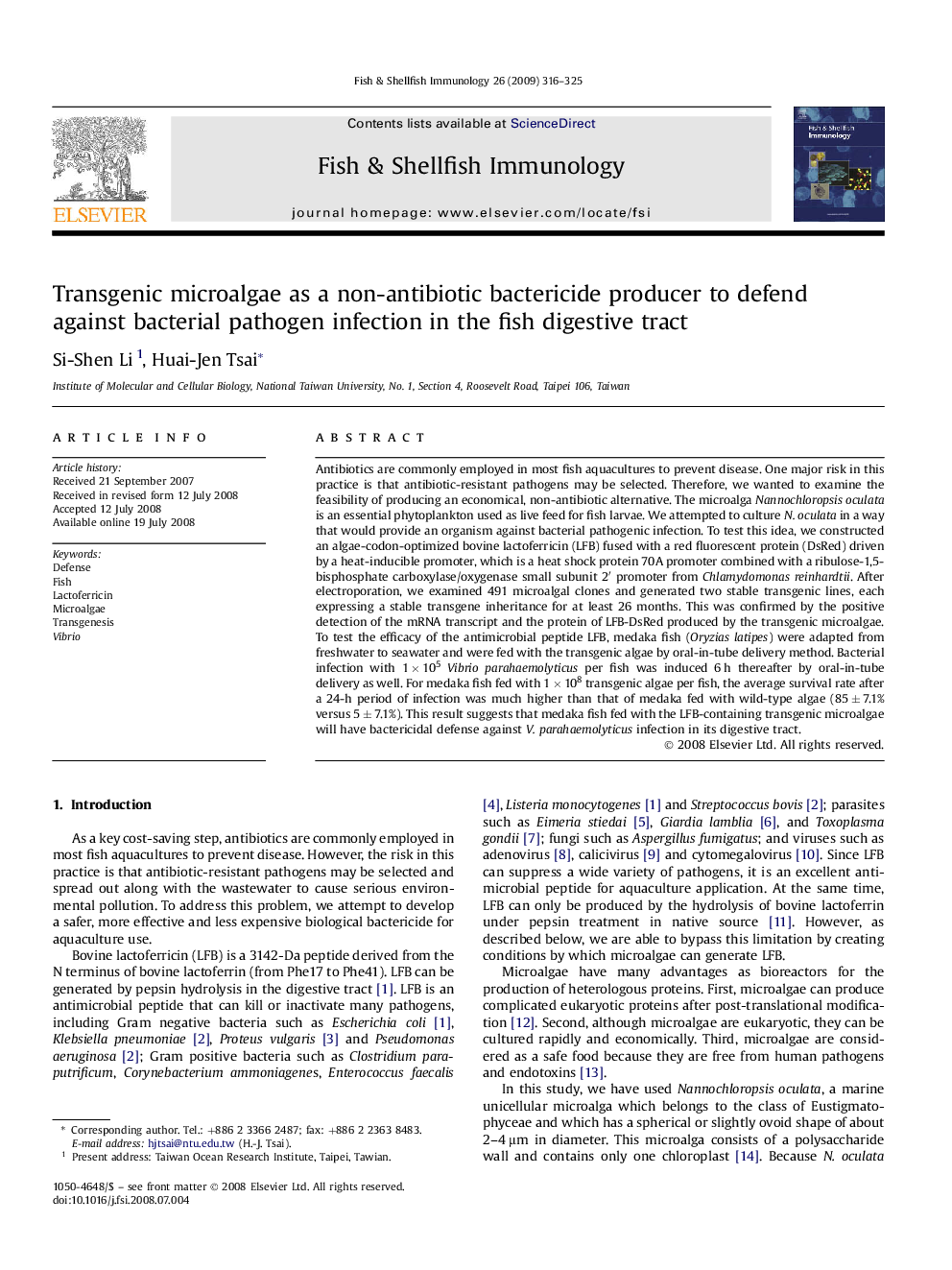| کد مقاله | کد نشریه | سال انتشار | مقاله انگلیسی | نسخه تمام متن |
|---|---|---|---|---|
| 2433073 | 1106817 | 2009 | 10 صفحه PDF | دانلود رایگان |

Antibiotics are commonly employed in most fish aquacultures to prevent disease. One major risk in this practice is that antibiotic-resistant pathogens may be selected. Therefore, we wanted to examine the feasibility of producing an economical, non-antibiotic alternative. The microalga Nannochloropsis oculata is an essential phytoplankton used as live feed for fish larvae. We attempted to culture N. oculata in a way that would provide an organism against bacterial pathogenic infection. To test this idea, we constructed an algae-codon-optimized bovine lactoferricin (LFB) fused with a red fluorescent protein (DsRed) driven by a heat-inducible promoter, which is a heat shock protein 70A promoter combined with a ribulose-1,5-bisphosphate carboxylase/oxygenase small subunit 2′ promoter from Chlamydomonas reinhardtii. After electroporation, we examined 491 microalgal clones and generated two stable transgenic lines, each expressing a stable transgene inheritance for at least 26 months. This was confirmed by the positive detection of the mRNA transcript and the protein of LFB-DsRed produced by the transgenic microalgae. To test the efficacy of the antimicrobial peptide LFB, medaka fish (Oryzias latipes) were adapted from freshwater to seawater and were fed with the transgenic algae by oral-in-tube delivery method. Bacterial infection with 1 × 105Vibrio parahaemolyticus per fish was induced 6 h thereafter by oral-in-tube delivery as well. For medaka fish fed with 1 × 108 transgenic algae per fish, the average survival rate after a 24-h period of infection was much higher than that of medaka fed with wild-type algae (85 ± 7.1% versus 5 ± 7.1%). This result suggests that medaka fish fed with the LFB-containing transgenic microalgae will have bactericidal defense against V. parahaemolyticus infection in its digestive tract.
Journal: Fish & Shellfish Immunology - Volume 26, Issue 2, February 2009, Pages 316–325